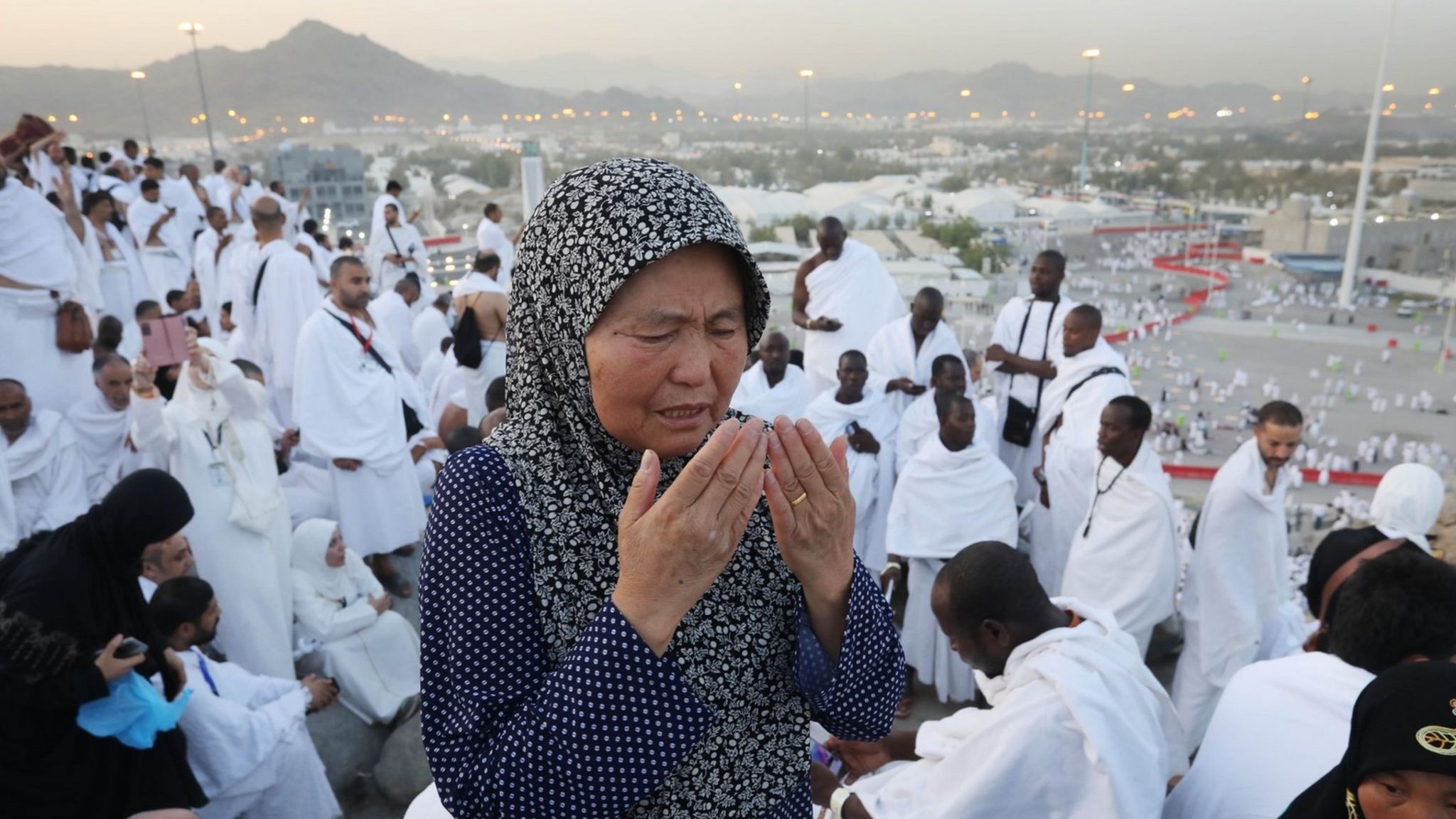The annual Hajj pilgrimage, one of the largest religious gatherings in the world, has become increasingly unaffordable for many Muslims due to global price rises. This year, 1.8 million Muslims from around the world gathered at Mount Arafat in Saudi Arabia to mark the most important day of the Hajj. However, the number of bookings has significantly dropped, with the pilgrimage becoming too costly for many people.
In Egypt, the most populous Arab country, the cheapest government-sponsored pilgrimage now costs around $6,000, double the price from last year. The sharp devaluation of the Egyptian pound, which has lost more than 50% of its value against the US dollar since March 2022, has fueled the price hike. The cost of living has also skyrocketed, with annual core inflation reaching 40% in May.
The rising cost of the Hajj has had a significant impact on individuals like Farida, a retired Egyptian civil servant who saved for five years to go on the pilgrimage. However, her savings are not enough to cover the trip, and she was shocked when she saw the price list. Farida, a widow and mother of five, describes performing the Hajj as her dream and believes it cleanses the soul. She used a loophole in the system to perform the Hajj this year, obtaining a three-month tourist visa instead of a Hajj visa, which made her trip 80% cheaper than the government-sponsored package.
The subsidy for the pilgrimage has also been cut in some countries. Indonesia, the world’s largest Muslim-majority nation, reduced the subsidy from 60% to 50% this year, resulting in each Indonesian pilgrim having to pay $3,320. In 2022, the package cost $2,660.
The financial cost of the Hajj is a significant obstacle for many Muslims worldwide. However, for those in Yemen, Saudi Arabia’s war-torn and impoverished southern neighbor, the situation is even more complicated. The country has been devastated by a conflict that escalated in 2015, causing one of the world’s biggest humanitarian disasters. This month, Yemeni pilgrims were able to fly directly from the rebel-held capital, Sanaa, to Saudi Arabia for the Hajj for the first time in about seven years. However, the cost of the pilgrimage, about $3,000, is considerable in a country where millions of people require humanitarian assistance and do not know where their next meal will come from.
The rising costs and financial barriers associated with the Hajj highlight the challenges faced by Muslims worldwide in fulfilling this religious obligation.

What measures have been taken by the Saudi Arabian government to alleviate the financial burden on aspiring pilgrims
5% of its value against the dollar in recent years, has contributed to this increase in price. For many Egyptians, this has made the once-in-a-lifetime journey to Hajj unattainable.
Similar trends have been observed in other countries as well. In Pakistan, the cost of the pilgrimage has increased by approximately 40% due to currency devaluation and rising accommodation and transportation expenses. This has forced many aspiring pilgrims to put their Hajj dreams on hold.
The rising cost of Hajj poses a significant challenge for Muslims seeking to fulfill their religious obligations. Many Muslims consider it their duty to undertake the pilgrimage at least once in their lifetime, as it is one of the Five Pillars of Islam. However, for those who struggle to afford the high costs, this religious obligation seems increasingly out of reach.
The Saudi Arabian government has introduced measures to mitigate the financial burden on aspiring pilgrims. They have reduced the visa fees and introduced various subsidy programs to assist those who cannot afford the full cost of the journey. However, despite these efforts, the overall cost of Hajj remains a major obstacle for many.
In light of these challenges, there have been suggestions for governments, religious organizations, and charity groups to work together in order to find sustainable solutions to make Hajj more affordable. This could include initiatives such as setting up dedicated funds to assist low-income Muslims, negotiating affordable travel packages, and introducing financial aid programs to help cover the expenses.
Furthermore, technological advancements could also play a role in reducing the cost of Hajj. Virtual reality and live streaming technologies could provide an immersive experience for Muslims who are unable to physically undertake the journey. While this would not replace the spiritual significance of the actual pilgrimage, it could offer a viable alternative for those facing financial difficulties.
Ultimately, the increasing cost of Hajj raises concerns about the accessibility and inclusivity of this significant religious gathering. Efforts must be made to address these challenges and ensure that Muslims from all walks of life can fulfill their religious obligations without facing insurmountable financial barriers.



This article sheds light on the growing financial hurdles faced by Muslim pilgrims during the Hajj. It is crucial to address these rising costs and find ways to make this spiritual journey more accessible for all believers.